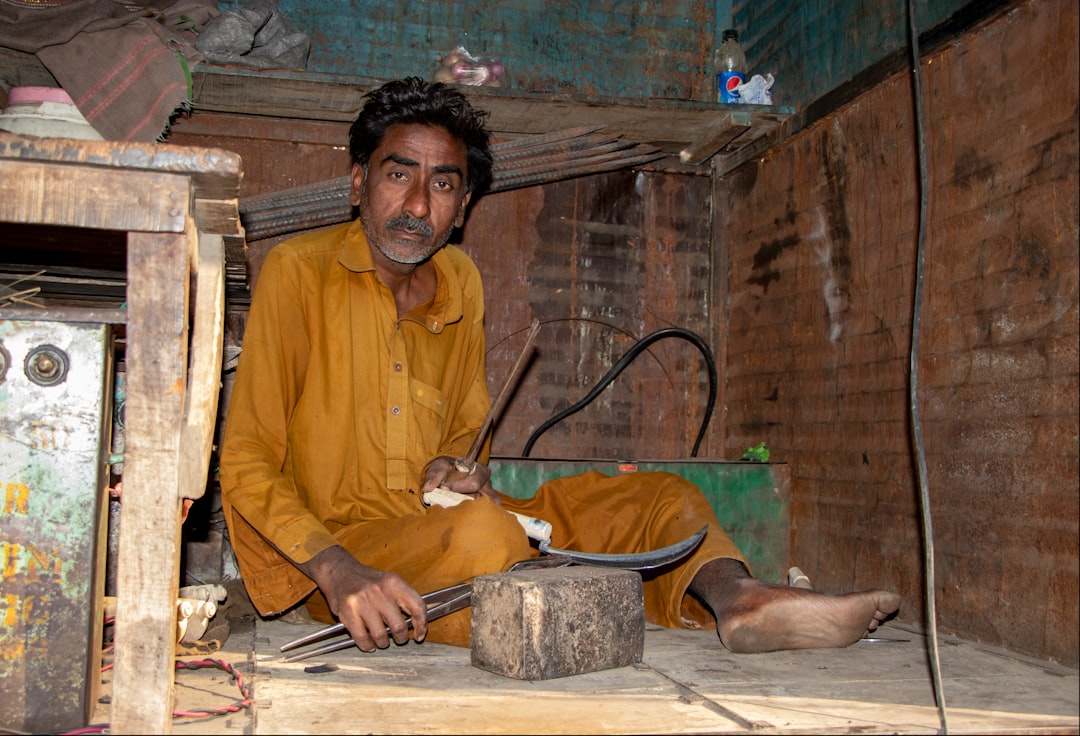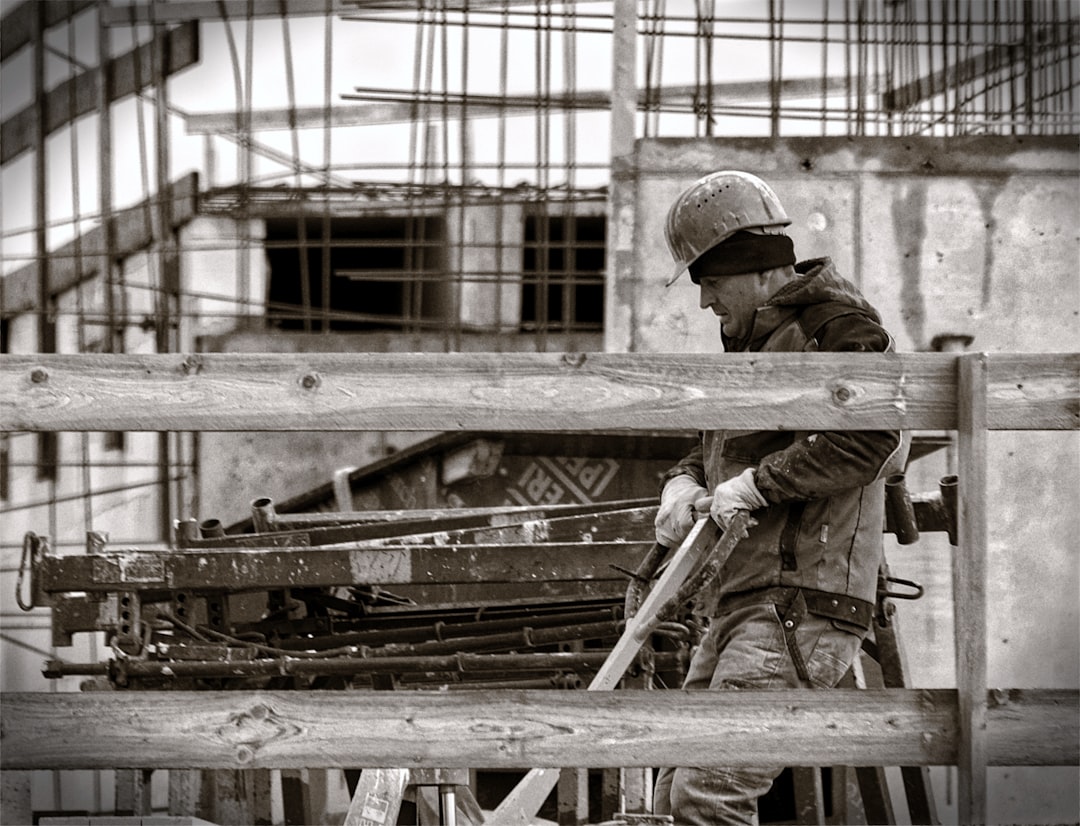

Engage prospects with a scan and streamline customer engagement with FREE QR code marketing tools by Sona – no strings attached!
Create a Free QR CodeFree consultation

No commitment

Engage prospects with a scan and streamline customer engagement with FREE QR code marketing tools by Sona – no strings attached!
Create a Free QR CodeFree consultation

No commitment
Lathing contracting companies are central to construction and renovation projects, where efficiency, speed, and clear communication are vital for success. However, many contractors still struggle with scattered paper processes, invisible jobsite bottlenecks, and the challenge of maintaining clear client engagement throughout the project lifecycle. This often results in missed high-value prospects and overlooked feedback, leading to lost opportunities and reduced project margins.
As the construction sector evolves, firms face increasing pressure to bridge the gap between on-site operations and digital workflows. QR codes in marketing now offer a practical, app-free solution to connect the physical jobsite with real-time information and customizable digital actions. Contractors can track every scan, gather actionable site data, and convert these interactions into insights for operational or marketing improvement.
This guide explores how QR code technology reduces common pain points, unlocks new efficiencies, and empowers lathing contractors to turn brief jobsite interactions into measurable, revenue-driving opportunities.

Lathing contractors often lose valuable time to analog, fragmented workflows, such as misplaced work orders or inspection logs that never make it into a digital system. These issues slow down field teams, create avoidable rework, and limit leadership visibility into job progress, material usage, and safety compliance. QR codes bridge the physical-to-digital gap by routing every scan to a specific action: submit a form, log an inspection, view a spec sheet, or book a consultation.
Start by identifying the most friction-filled moments in your operation and replacing them with QR-enabled workflows. Printed safety protocols without acknowledgement, manual timecards that are hard to verify, and maintenance notes scribbled on clipboards all become structured, timestamped data with a single scan. Modern platforms like Sona QR’s product overview automate code creation, allow dynamic destination updates, and connect scan activity directly to your CRM or project tools, closing the loop between the field and the office. See this contractor QR guide for practical setup tips.
When you replace passive paper with QR-enabled actions, you eliminate blind spots and create a continuous feedback loop. What used to be a missed conversation or a lost piece of paper becomes structured data that fuels scheduling, quality control, and marketing follow-up.

Lathing contractors often contend with limited visibility into site activity and client engagement. Prospects interact with yard signs, brochures, and mailers, yet remain anonymous; field teams complete inspections or handovers, yet forms sit in trucks or get misfiled. The result is slower decisions, lost leads, and reduced margins. QR codes convert these moments into digital interactions that are fast, trackable, and actionable. For a trade-specific overview, review this contractor QR marketing primer.
Unlike apps that require downloads and logins, QR codes work instantly with any smartphone. A scan can open a dynamic web page, pre-fill an email, trigger a call, or launch a form. You can update destinations without reprinting, capture contextual data with each scan, and segment users for personalized follow-up. For lathing firms that rely on speed, precision, and tight coordination with GCs and inspectors, QR codes are a lightweight way to unify field operations with business systems.
Start creating QR codes for free at Sona QR.
By linking physical assets to digital systems, QR codes help lathing contractors maintain real-time situational awareness, reduce paper waste, and capture more opportunities from the same marketing spend.

Different goals require different QR formats. Lathing contractors can deploy several types to streamline operations and accelerate sales while keeping everything app-free and easy for busy stakeholders.
Dynamic, editable QR codes are best for assets that may change over time, such as project updates, live schedules, or content that evolves with each construction phase. Static codes suit permanent, unchanging destinations, such as a general contact page or a fixed safety policy.
Growth stalls when your offline presence remains unmeasured. Lathing firms rely on print-heavy channels like yard signs, truck branding, trade show materials, and printed bids. When you embed QR codes into these assets, each scan becomes a data point that informs follow-up, prioritization, and budget allocation.
Review your physical touchpoints and map each to a measurable next step. A billboard near a new development can link to a multi-family capabilities page; a brochure can open a case study library; a direct mailer can offer a calendar booking. Centralized QR analytics then reveal which placements drive qualified interest so you can double down on what works. See how to deploy billboard QR codes and make direct mail measurable. For inspiration, explore these QR ideas for contractors.
By making every physical interaction scannable, you can transform awareness into intent and intent into action. The data you collect helps marketing, sales, and operations pull in the same direction.
QR codes are versatile building blocks that improve both field execution and revenue capture. Focus on use cases that tie directly to business outcomes and that your crews and clients will find easy to adopt.
These use cases surface previously invisible engagement and streamline vital workflows. They shorten cycle times for approvals, increase data accuracy, and make every client and crew touchpoint measurable.
Every scan is a signal of intent. By deploying distinct QR codes across the buyer journey and your operations, you can segment audiences automatically and retarget them with the right message at the right time. For a lathing contractor, that might mean distinguishing a homeowner who scans a brochure from a GC who scans a bid sheet, then following up accordingly.
Start by mapping your funnel stages and aligning specific QR destinations and tags to each stage. Awareness scans on a vehicle wrap feed a broad top-of-funnel audience; scans on a technical spec sheet indicate deeper interest and can trigger a sales alert. Add context like time, location, and media source to refine segmentation and improve conversion rates. For deeper tactics, use this retargeting playbook from Sona.
Audience distinctions that work well in lathing include general contractors vs. homeowners, architects vs. builders, and current customers vs. net-new prospects. When paired with dynamic content, each segment receives messaging that fits their technical depth and buying timeline.
QR codes are connective tissue across offline and digital marketing. They make print measurable, events interactive, and video actionable. For lathing contractors who invest in community presence and B2B relationship building, QR codes turn brand impressions into trackable pipeline.
Think of QR codes as the offline onramp to your digital engine. A single code can route to a calendar booking, a project gallery, or a spec library. When powered by a centralized platform like Sona QR, you can manage all codes, monitor performance, and sync data with your CRM and ad tools to create a responsive, omnichannel system.
When each channel feeds a unified data view, you can attribute pipeline to specific placements and messages, then shift spend toward what consistently generates revenue.
QR initiatives succeed when you define clear goals, plan the deployment environment, and commit to iteration. Treat QR codes as a performance channel, not a print ornament, and you will capture more demand while improving operations.
Below is a practical, repeatable workflow you can use for a single campaign or at scale across your company. Each step is designed to minimize friction for scanners and maximize insight for your team.
Clarify what you want to accomplish. Pick one high-impact pain point where real-time digital capture adds value. For lathing firms, strong starting points include safety acknowledgements at site entry, estimate-to-booking conversion, and post-installation service requests.
Choose the format that fits your destination and tracking needs. Static codes point to a fixed URL and are best for permanent resources. Dynamic codes are editable and trackable, ideal for campaigns and assets that may change.
Design for the environment where scanning will occur. Optimize contrast, size, and the call to action. Then test thoroughly in field conditions to ensure flawless performance.
Place codes where engagement is highest. Match placements to your growth plan and audience habits. For lathing contractors, that often means direct mailers to GCs, jobsite signage for community and inspector interactions, and proposal packets for decision makers.
Measurement turns scans into insight and insight into revenue. Watch performance daily in the first weeks, then standardize reporting and iteration cycles.
A short postmortem after each campaign helps your team apply lessons to the next one. Over time you will build a playbook of placements and messages that consistently produce revenue.
QR codes are the handshake. Attribution is the conversation that follows. For lathing contractors, proving which signs, mailers, or proposal elements generate pipeline is essential to prioritize budget and refine messaging. A robust tracking setup connects the scan to onsite behavior, CRM activity, and ultimately to closed revenue.
Sona is an AI-powered marketing platform that turns first-party data into revenue through automated attribution, data activation, and workflow orchestration. Many tools stop at scan counts. You need a stack that links scans to contacts, segments, and outcomes. With Sona QR for code management and Sona for attribution, you can unify fragmented touchpoints across buying stages, from the first scan to the signed contract. This creates a defensible performance narrative that wins budget and aligns teams.
With this data, you move beyond passive technology into a performance engine. You can justify spend, forecast demand by channel, and coach teams on what to deploy next.
Once your first campaign is live, scale the wins while tightening the feedback loop. The most effective lathing contractors treat QR codes as part of a broader revenue system that connects marketing, sales, and operations.
Focus your playbook on the media your audience sees most, the actions that correlate with revenue, and the tools your team already uses. Time saved in the field and faster estimate bookings both contribute to margin, so include both operational and marketing use cases in your plan.
Creative deployments that work well include QR codes on invoices for change-order approvals and QR stickers on equipment that route to maintenance logs and MSDS sheets. These small touches add up to a smoother customer journey and more reliable data.
Lathing contractors are already using QR workflows to eliminate friction and surface valuable signals. On several multi-family projects, QR-enabled safety checklists at entry turnstiles captured daily acknowledgements from every trade. Compliance scores rose, and superintendents had real-time dashboards instead of chasing clipboards at dusk. Another firm tagged equipment with durable QR plates that opened maintenance logs and inspection histories, reducing downtime and preventing redundant service calls.
On the marketing side, teams added QR codes to direct mail sent to general contractors near active developments. Scans routed to project galleries that matched the recipient’s sector, such as hospitality or education. Those who scanned twice were added to an SDR call list, resulting in a 30 percent increase in meetings booked over baseline. At trade shows, QR-enabled demos captured leads with a two-question form that auto-synced to Salesforce and dropped scanners into a post-event nurture sequence with case studies tailored to their role.
These examples show how QR codes can serve both the field and the front office. The common thread is clarity of purpose, fast destinations, and tight integration with existing systems. For more contractor-focused ideas, browse these QR best practices.
Success with QR codes comes from intentional design and disciplined execution. The technology is simple; the difference lies in how well you match the code to the environment and the action to the business goal. Avoid treating QR as a novelty and instead make it a reliable mechanism for collecting signals and delivering value.
Common missteps include tiny codes on distant signage, vague calls to action, and slow-loading landing pages. Another pitfall is using a single generic code across many assets, which destroys attribution and hampers optimization. Finally, teams sometimes skip training, which lowers adoption on site and confuses clients about what to do after scanning.
QR codes now provide lathing contractors with a powerful way to close longstanding gaps between physical project touchpoints and digital systems that drive growth. With thoughtful deployment, each scan becomes a bridge to enhanced operational insight, better marketing attribution, and a smoother customer journey. Contractors can document progress, capture buyer intent, and nurture high-value accounts, delivering agile, data-driven service that defines success in today’s construction industry. Start creating QR codes for free at Sona QR.
QR codes have transformed lathing contracting companies from traditional service providers into tech-savvy industry leaders with streamlined access and enhanced operational efficiency. Whether it’s simplifying project documentation, enabling instant access to technical specs, or improving communication between contractors and clients, QR codes replace cumbersome paper trails with instant, mobile-friendly solutions that boost accuracy and save time. Imagine having every job detail, safety protocol, and material specification available at your fingertips exactly when you need it—effortlessly and reliably.
With Sona QR, you can create dynamic, trackable QR codes that update instantly without reprinting, ensuring your teams and clients always have the latest information. Each scan delivers actionable insights, helping you monitor field activities, reduce errors, and accelerate project timelines. Start for free with Sona QR today and transform how your lathing contracting company accesses and shares critical information—making every scan a step toward smarter, faster, and more profitable projects.
Lathing contracting companies improve construction efficiency, enhance communication, reduce paper waste, capture more client engagement, and increase project margins through streamlined workflows and digital tools.
They use QR code technology to digitize workflows, eliminate paper-based delays, enable real-time data capture, and connect field operations with business systems for faster decision-making and better coordination.
Services include safety inspections, customer estimates and proposals, project handover and aftercare, subcontractor onboarding, material verification, and marketing support through QR-enabled engagement.
Look for companies that use modern digital tools like QR codes to improve transparency, track project progress, and maintain clear client communication throughout the project lifecycle.
The latest trends include integrating QR codes for real-time jobsite data, dynamic digital marketing, measurable offline-to-online conversions, and advanced tracking and analytics to optimize operations and sales.
Use Sona QR's trackable codes to improve customer acquisition and engagement today.
Create Your FREE Trackable QR Code in SecondsJoin results-focused teams combining Sona Platform automation with advanced Google Ads strategies to scale lead generation

Connect your existing CRM

Free Account Enrichment

No setup fees
No commitment required

Free consultation

Get a custom Google Ads roadmap for your business






Launch campaigns that generate qualified leads in 30 days or less.
